.
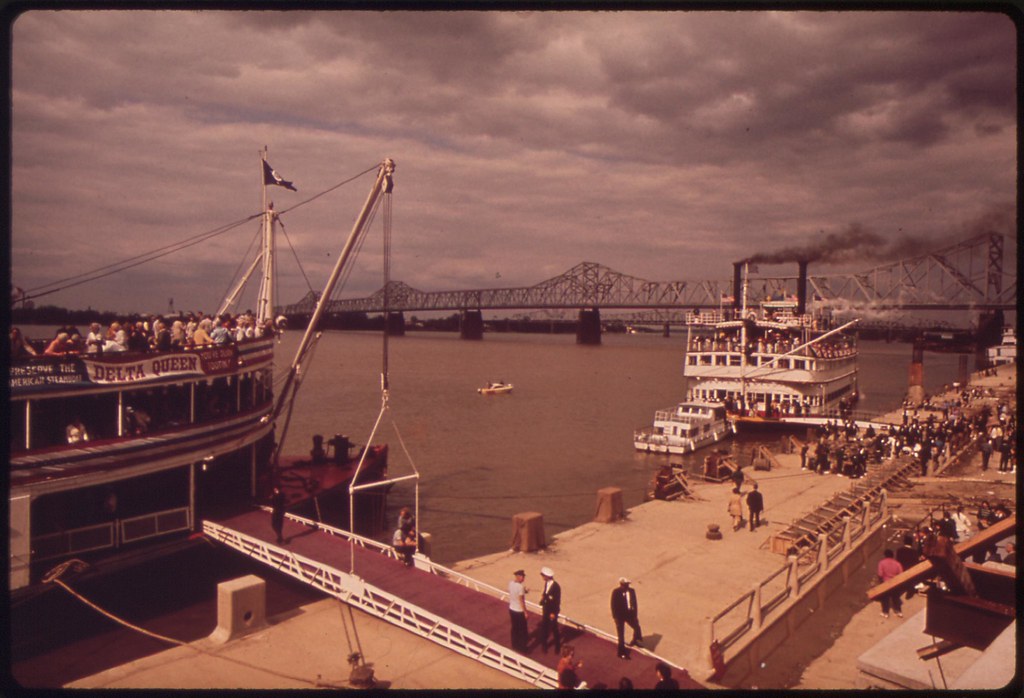
Paddle wheel steamboats docked at the new Louisville waterfront on the Ohio River, May 1972
The beautiful river Ohio, bounds Kentucke in its whole length, being a
mile and sometimes less in breadth, and is sufficient to carry boats of
great burthen. Its general course is south 60 degrees west; and in its
course it receives numbers of large and small rivers, which pay tribute
to its glory.
John Filson (c. 1747-1788), in The Discovery, Settlement and Present State of Kentucke (1784)
John Filson (c. 1747-1788), in The Discovery, Settlement and Present State of Kentucke (1784)

Picnic on the Ohio River, May 1972
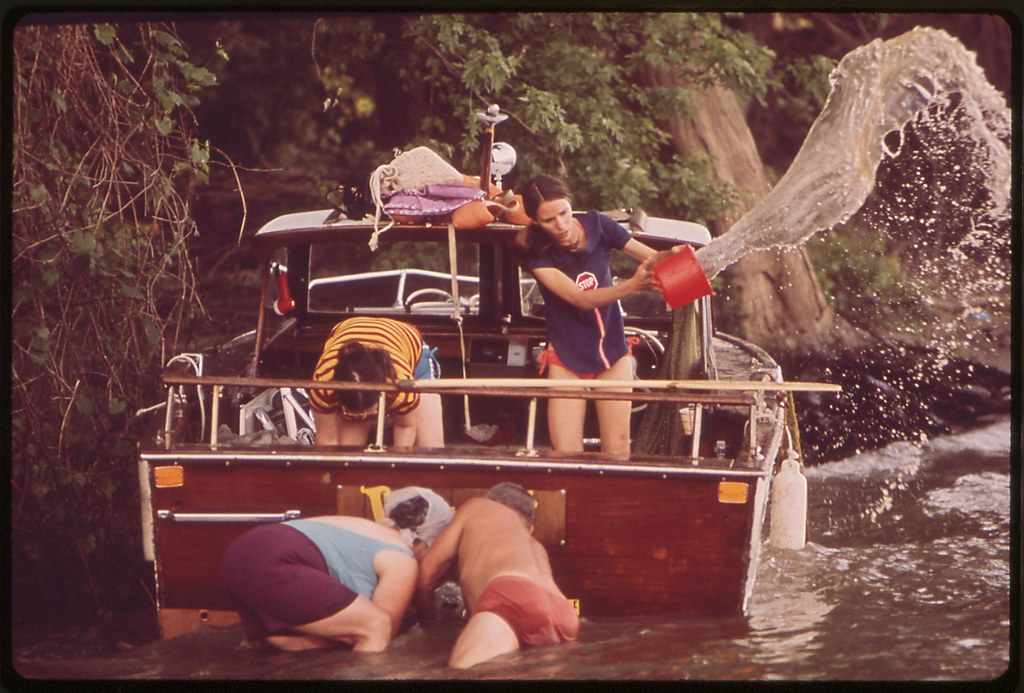
Small pleasure craft goes aground on banks of the Ohio River, June 1972
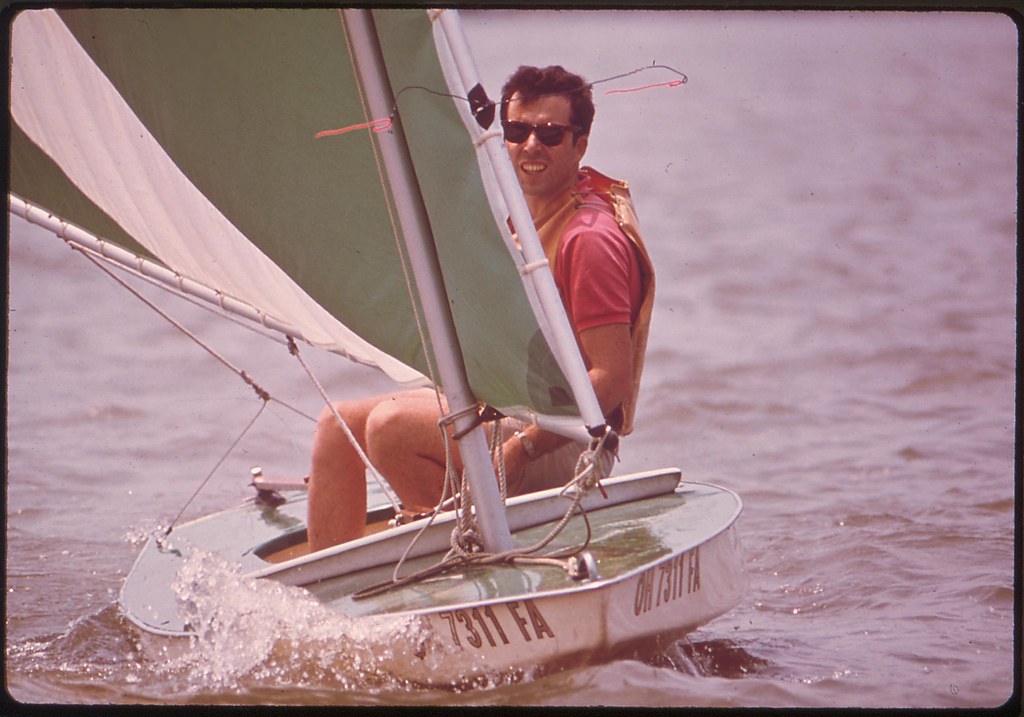
Participant in the Louisville Spring Regatta, June 1972

Participant in the Louisville Spring Regatta, June 1972

The Ohio River, June 1972
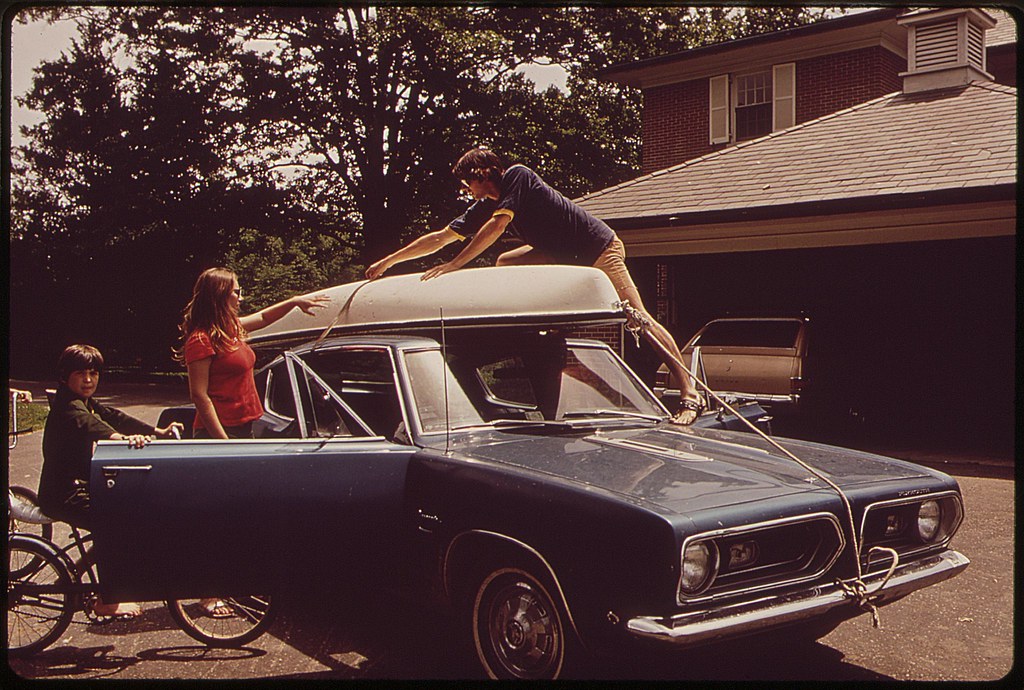
Boaters unload canoe near the Ohio River, September 1972
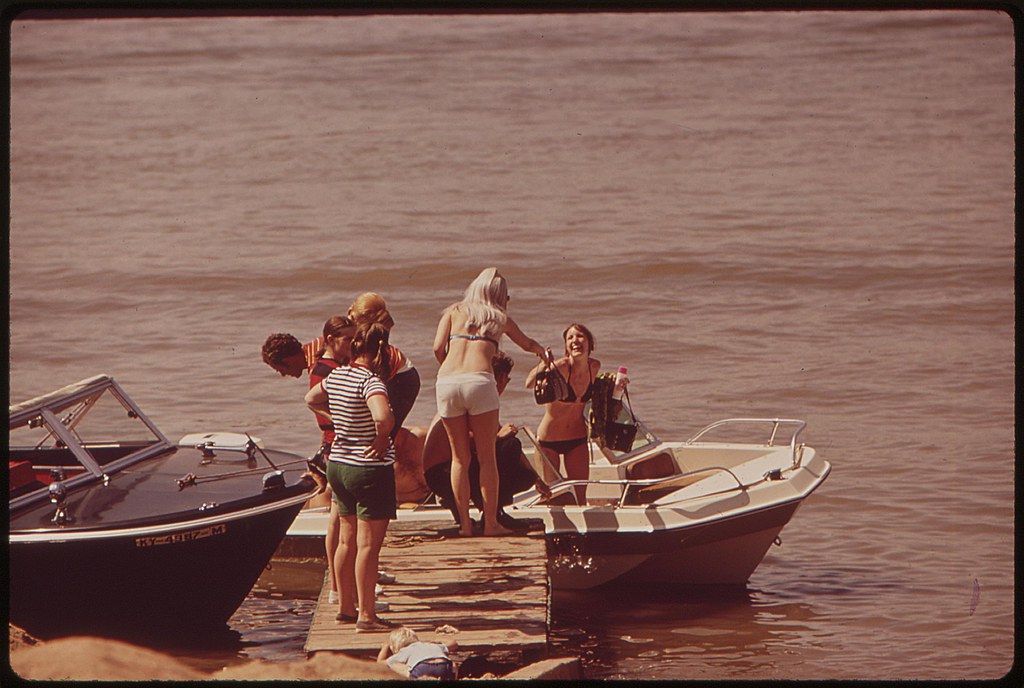
The Ohio River, June 1972

Small pleasure craft goes aground on banks of the Ohio River, June 1972

Participant in the Louisville Spring Regatta, June 1972

Participant in the Louisville Spring Regatta, June 1972

The Ohio River, June 1972

Boaters unload canoe near the Ohio River, September 1972

The Ohio River, June 1972
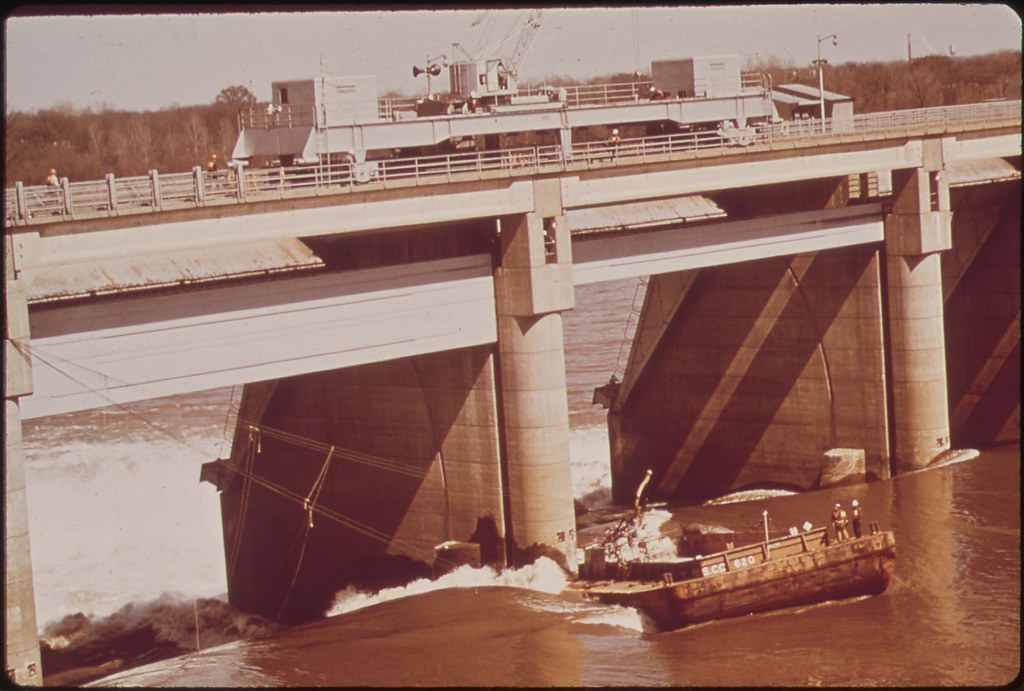
A liquid chlorine barge, after breaking loose from its tug, became lodged against the McAlpine dam on the Ohio River and could not be set free, Louisville, Kentucky, March 1972
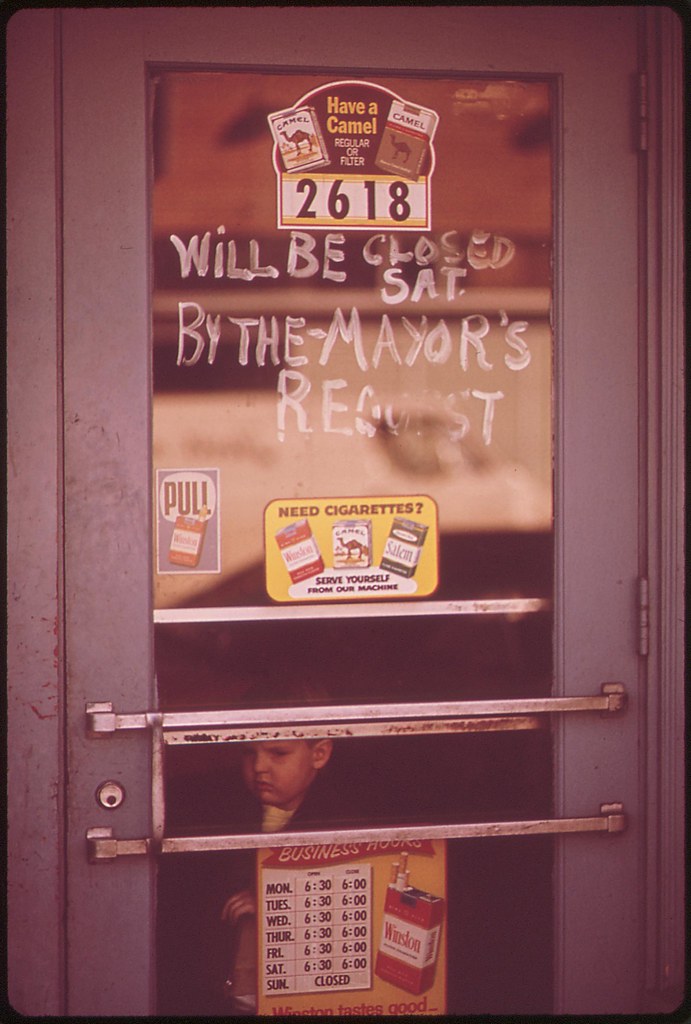
Shop evacuated when a barge carrying liquid chlorine threatened to spill its poisonous contents. Liquid chlorine is stored under pressure, and if a leak occurs, it changes into a poisonous gas. The barge carried enough liquid chlorine to devastate much of the City of Louisville, April 1972

The streets of the Louisville waterfront area, Portland, deserted following evacuation. A barge carrying liquid chlorine had broken loose from its tug on the Ohio River and was in danger of spilling the poisonous contents, March 1972
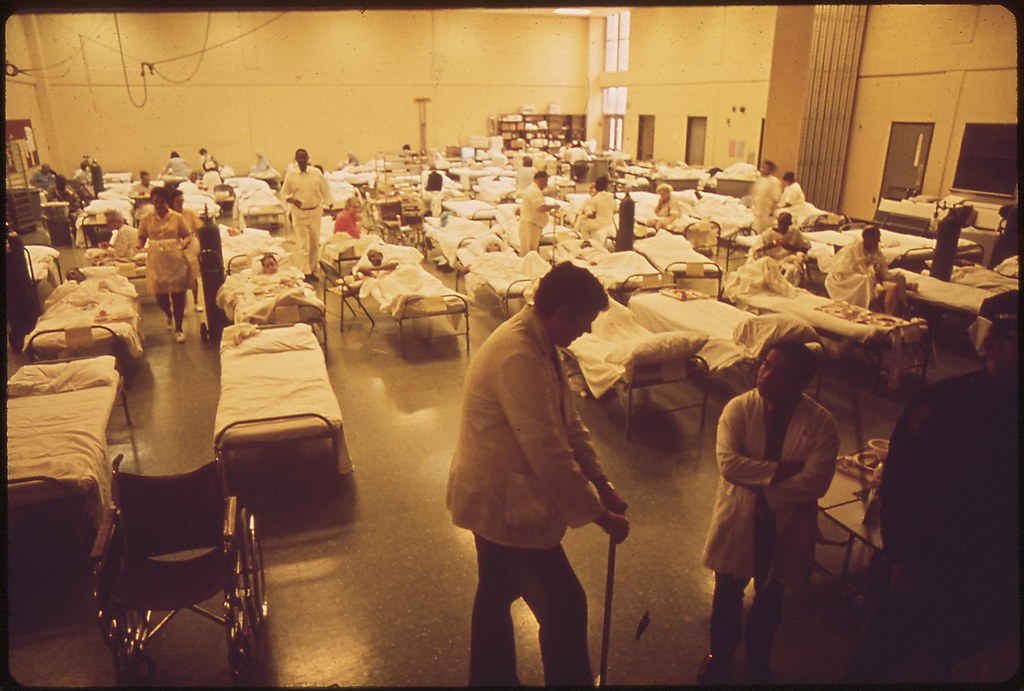
Louisville mayor Frank Burke ordered 4800 residents of the waterfront area known as Portland to evacuate, April 1972
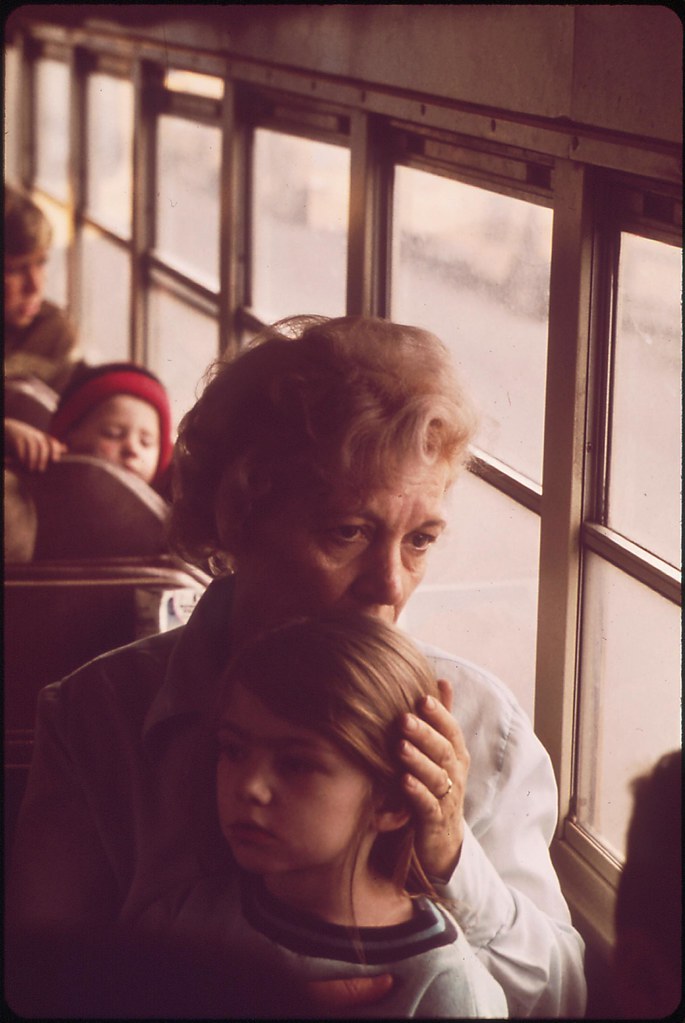
A worried mother and her child leave Louisville by bus after the city was evacuated, March 1972

A nurse helps an elderly patient leave Louisville Memorial Hospital during the evacuation, March 1972
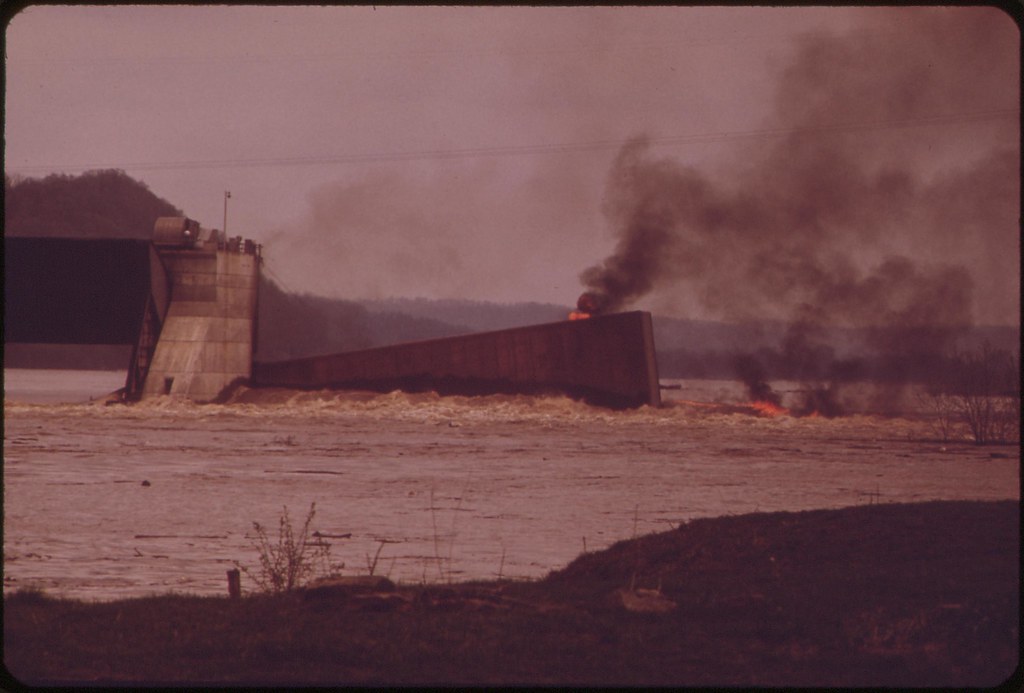
Burning barge on the Ohio River, May 1972

Automobile junkyard can be seen from high rise buildings in downtown Louisville, September 1972
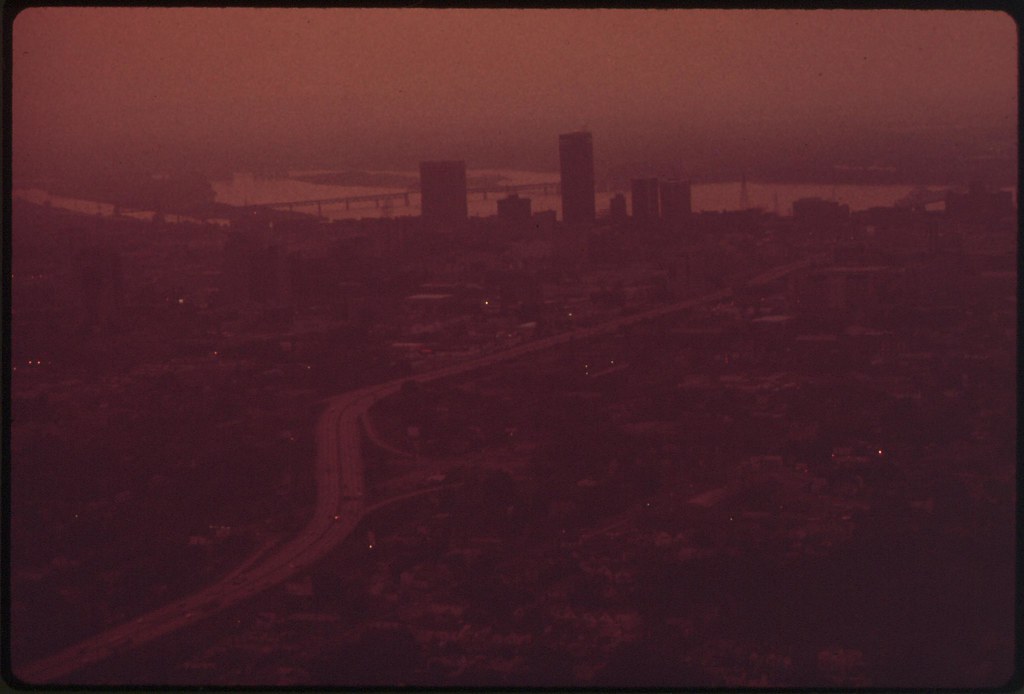
Smog over Louisville and Ohio River, September 1972
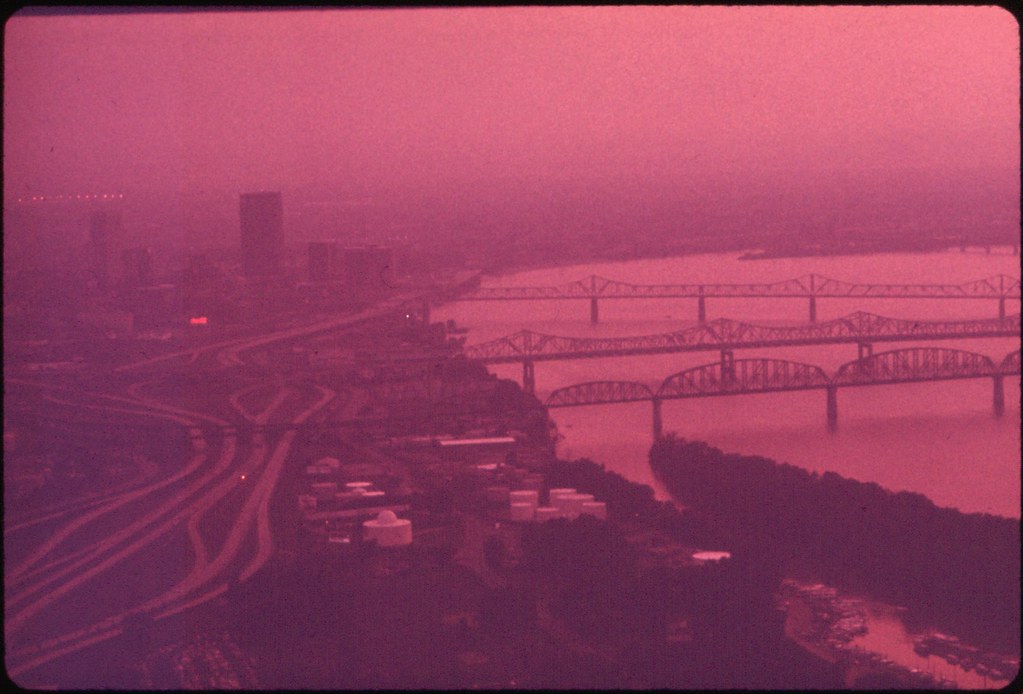
Smog hangs over Louisville and Ohio River, September 1972

Smog, Louisville, September 1972
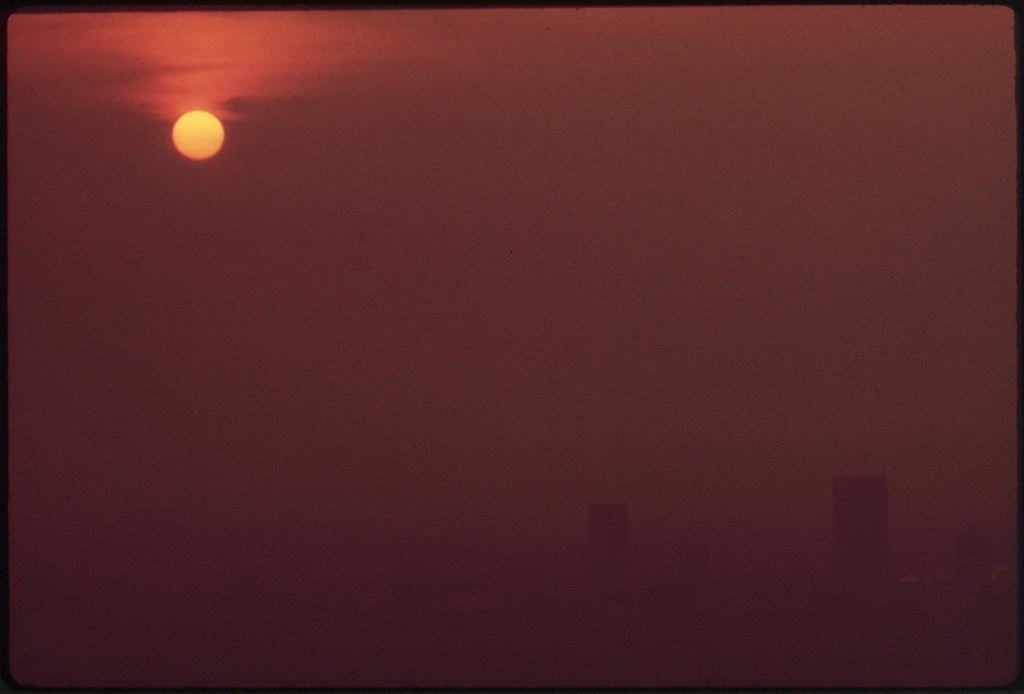
Smog lingers over Louisvile skyline, September 1972
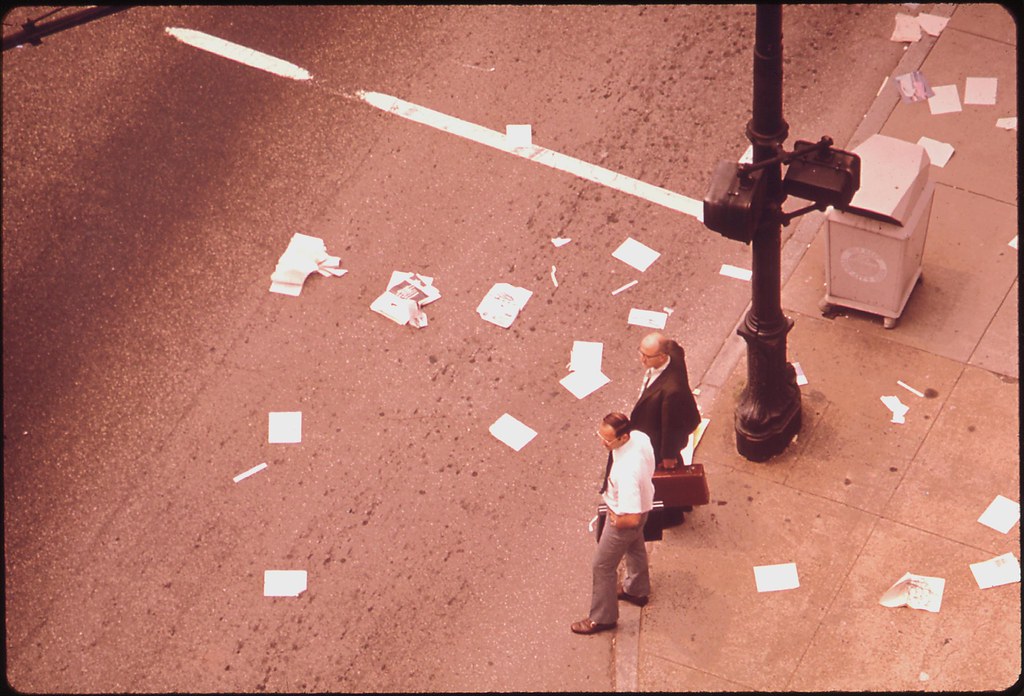
Magazines and newspapers litter a downtown Louisville street after debris was spilled from a passing truck, September 1972
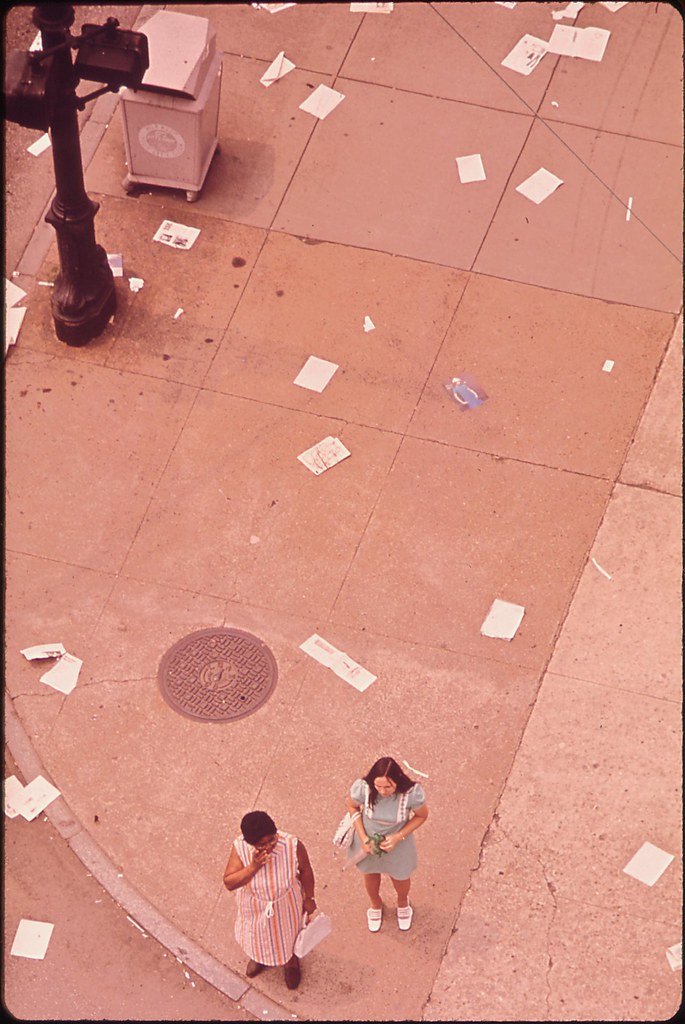
Magazines and newspapers litter the intersection of Sixth and Broadway, Louisville, after debris was spilled from a passing truck, September 1972

Pool hall, Louisville, April 1972
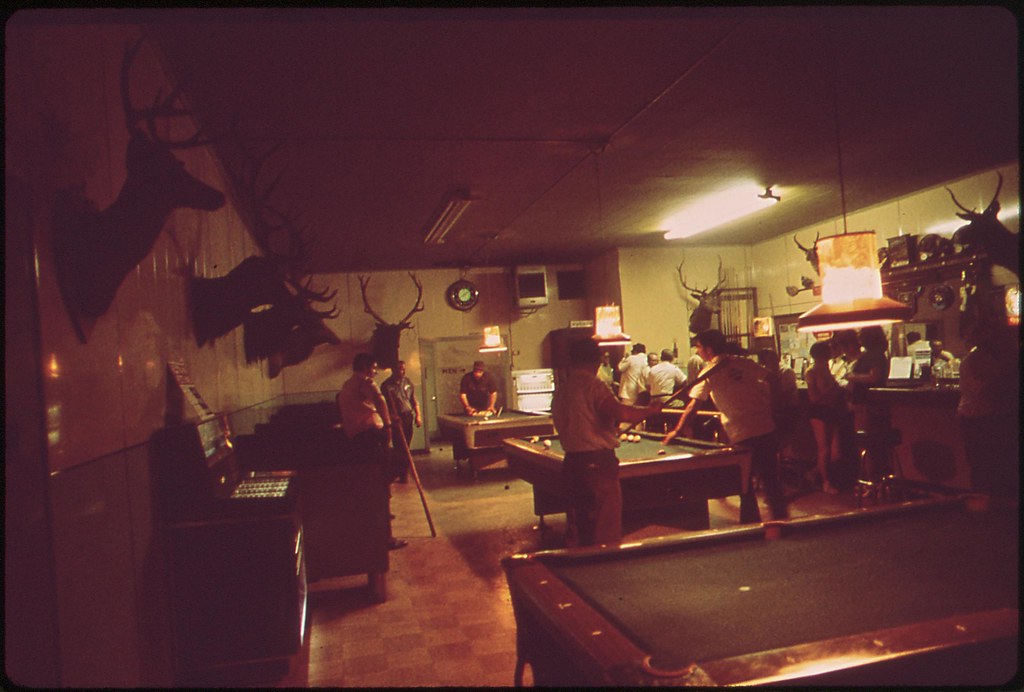
Pool hall, Louisville, Kentucky, June 1972
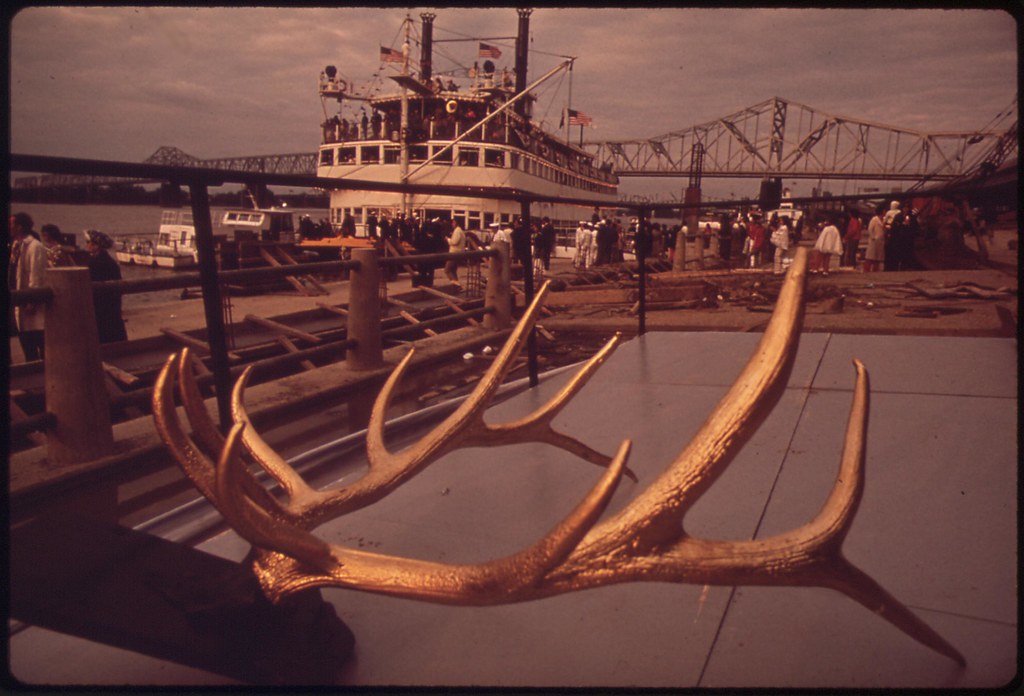
Belle of Louisiana, a paddlewheel steamboat owned by Louisville and Jefferson County, May 1972

Wedding on the Belle of Louisiana, May 1972
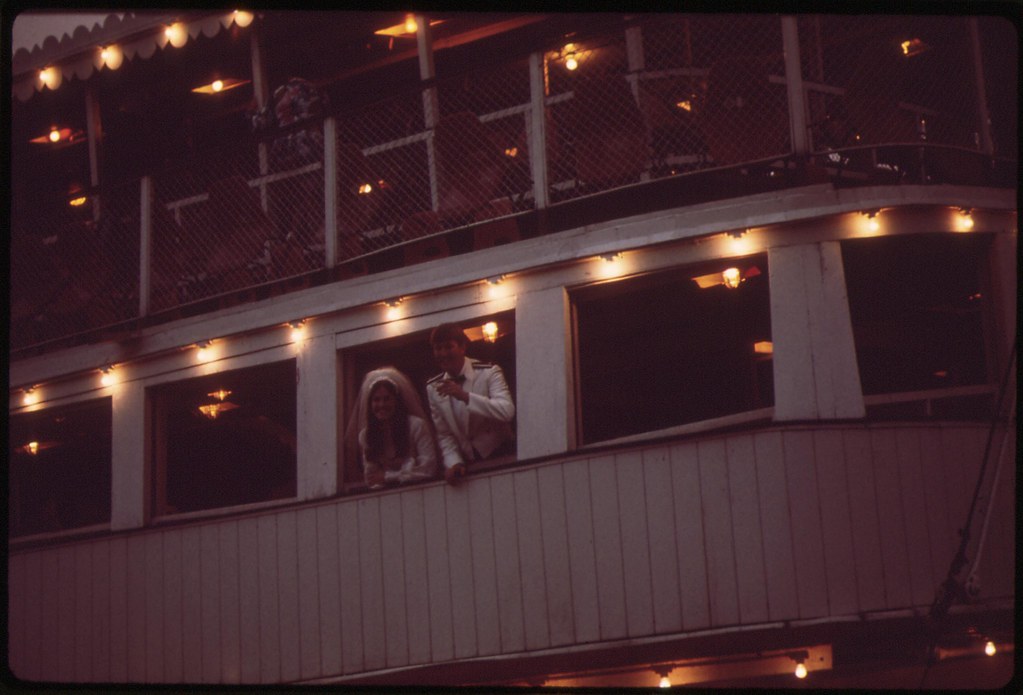
Bride and groom at wedding reception on the Belle of Louisiana steamboat, May 1972

Steamboat on the Ohio River, June 1972
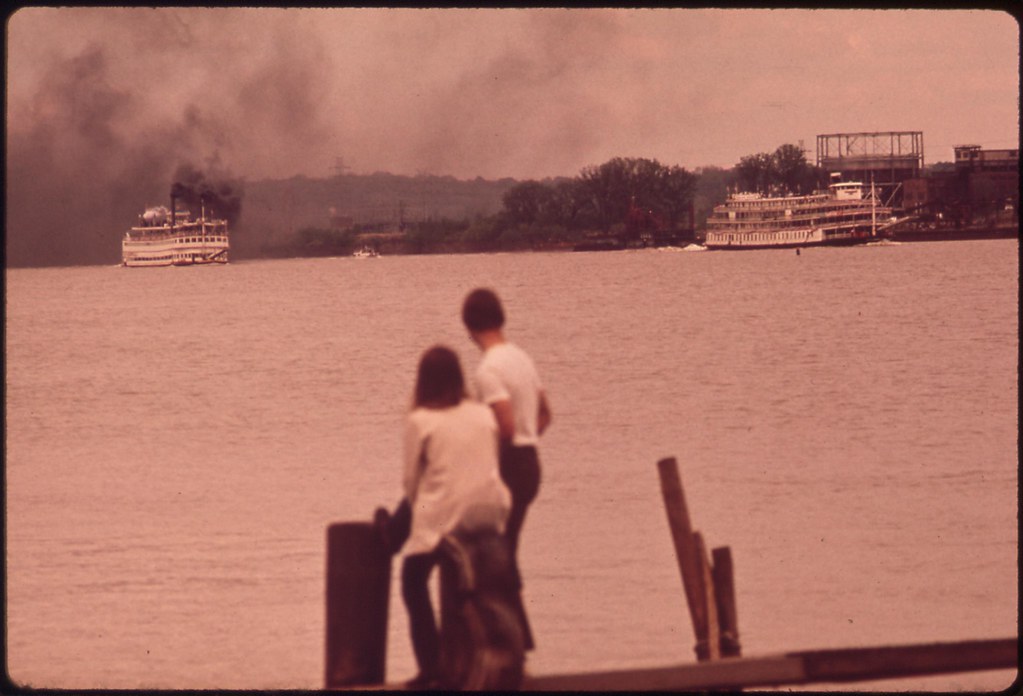
Paddlewheel steamboats seen from the banks of the Ohio River, May 1972

The Ohio River, September 1972
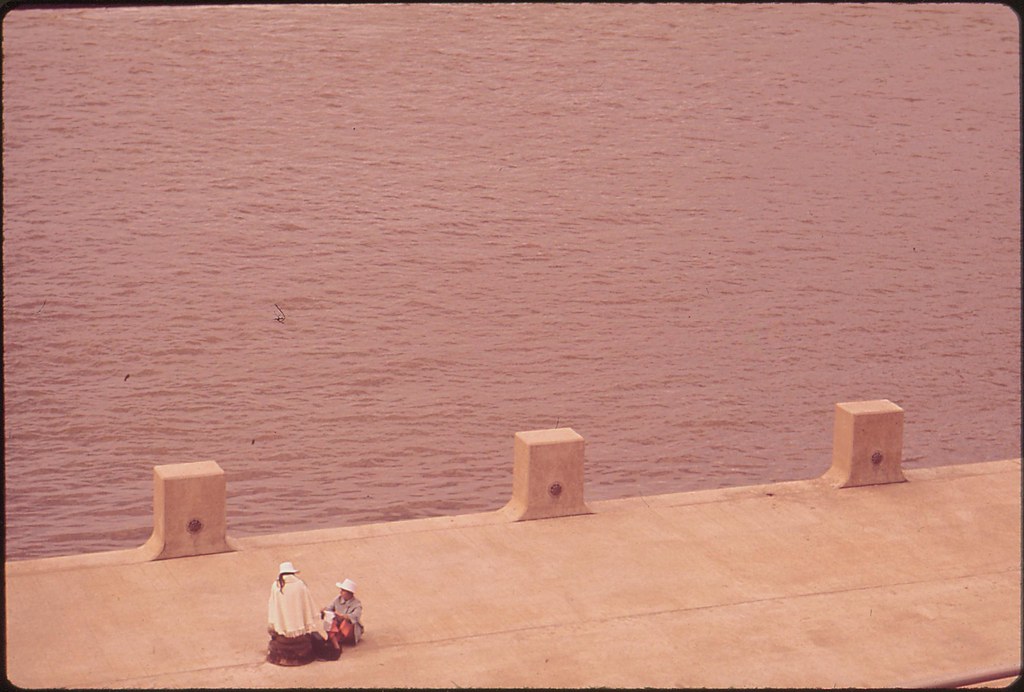
The Ohio River, May 1972

Litter left in the Ohio River, June 1972
Photos by William Hall "Bill" Strode (b. Louisville, Kentucky 5 August 1937, d. Versailles, Kentucky 15 May 2006) for the Environmental Protection Agency's DOCUMERICA Project (U.S. National Archives)



11 comments:
Recalling that two hundred years earlier, this patch of the planet had looked somewhat different to Daniel Boone, as recorded by Filson.
"One day I undertook a tour through the country, and the
diversity and beauties of nature I met with in this charming
season, expelled every gloomy and vexatious thought. Just at
the close of day the gentle gales retired, and left the place to
the disposal of a profound calm. Not a breeze shook the most
tremulous leaf. I had gained the summit of a commanding
ridge, and, looking round with astonishing delight, beheld the
ample plains, the beauteous tracts below. On the other hand,
I surveyed the famous river Ohio that rolled in silent dignity,
marking the western boundary of Kentucke with inconceiv-
able grandeur. At a vast distance I beheld the mountains lift
their venerable brows, and penetrate the clouds. All things
were still."
At a vast distance I behold the mountains knit their venerable brows, coughing and wheezing in the toxic clouds. Major Ohio River Basin Chemical Plants and Terminals
Harris "Little Turtle" Schiff
Tom,
"Just at the close of day the gentle gales retired, and left the place to the disposal of a profound calm."
O how things have changed "on the sunny sunny banks of the O-hi-o". . .
7.12
light coming into fog against invisible
top of ridge, sparrow calling on branch
in foreground, sound of wave in channel
thing which comes to and is
as that which, itself
would be by notes, pictures
such looking, oneself
grey white of fog against top of ridge,
white line of wave breaking in channel
Tom - Thanks for these great Bil Strode photos. It's easy to forget the mad variety of life of river towns and cities when you live on a coast. Though NYC is beginning to rediscover and pay some respect to its own rivers--too often of the corporate kind.
"The noted American anthropologist Alfred Kroeber once described the Indians of the eighteenth-century frontier as 'a new, assimilated, hybrid-Caucasian culture.' American frontiersmen, in turn, were often characterized by their contemporaries as hybrid Indians. Indeed, many colonial observers commented disparagingly on their 'half-Indian appearance,' and one missionary described them as 'generally white Savages, [who] subsist by hunting, and live like the Indians.'
"The two peoples also shared a number of cultural traits, such as common dietary conventions, medicinal practices, a belief in the power of omens and the foreshadowing of dreams, but at deeper levels they understood the world in basically different ways. Europeans and their American descendants tended to make a radical separation between the material and spiritual realms, and whatever their sectarian Christian beliefs, for the most part they were practical instrumentalists, interested in what worked. Indians, in contrast, tended to believe in the inseparability of matter and spirit, and their recorded history is punctuated with frequent and divisive cultural debates about the meaning or consequences of new approaches to the world. Americans were monotheists, lured by the simplicity of grand designs and single causes, while Indians were pantheists, describing a universe with a multiplicity of powers, sometimes in harmony, more frequently in conflict among themselves. Holding to a hierarchical model of reality, Americans favored clear lines of authority and power; Indians, believing in a more complicated and perhaps ultimately unfathomable universe, lived in societies with a diversity of overlapping roles and authorities, all of which seemed perfectly natural to them, but to most Americans seemed a trackless maze and cacophonous din. These descriptions, of course, are at opposite ends of a spectrum, and there were Americans, Boone among them, who moved quite far to the Indian direction of seeing things."
-- Daniel Mack Faragher: Daniel Boone, 1993.
Bonnie 'Prince' Billie: Ohio River Boat Song
Chief Little Turtle, that is a map to give pause even to a white man. Facilities noted can be seen in some of these photos, I believe.
“and in its course it receives numbers of large and small rivers, which pay tribute to its glory”
And the word “tributary” is revealed anew, flowing full of its original glory, though sic transit gloria, O once beautiful and mighty Ohio River!
See also, another glimpse by this fine photographer of the encroaching desolation:
Anecdote of the Exploding Jar
One of the tributaries of the Ohio is the New River, which rises on the Atlantic side of the eastern continental divide; yet its waters empty eventually into the Gulf of Mexico, arriving via the Kanawha River first, then the Ohio, and finally the Mississippi. Despite its name, geologist say the New is one of the world’s oldest rivers, second only to the Nile (though this is disputed), formed some three hundred million years ago, before the Appalachian uplift created the mountain range of the that name. And, same as the Ohio, the New is both enjoyed and abused. The Radford arsenal, which manufactures rocket propellant, among other destructive stuff, is one of the major polluters. The water I drink is drawn from the New.
The face of the boy seen through the window of the evacuated shop.
"She's my joy and sorrow too".
Now
that is one old river, Hazen.
Keith Frye, in Roadside Geology of Virginia, ranks it as the world's third most ancient.
The ranking of the Ohio among the nation's most polluted rivers, however, is undisputed. #1.
Seeing, in Strode's photos, all the human effluvia being casually spewed spilled into and around it in the name of Recreation (recreation wrecks the nation) and of course Industry, those two twin gods of the white eyes, one can't help thinking the Shawnee names for the river concealed onomatopoetic prophecy:
Pelewathiipi or Spelewathiipi.
Duncan,
That's such an effective photo, particularly in this medium wherein rather than seeing the whole image at once, one takes it in vertically, by stages, following the levels of information downward on the page much as if one were riding an elevator descending into a darkness that feels at once mundane and infernal. That pouting and suspicious (understandably) small human face appearing between (behind) bars is framed in several of the possible evils of the world. And the white van reflected in the glass -- an emergency vehicle?
Post a Comment